Austin Eye View: Architectural Insights to Make the Most of Your Space
Talented designers share their tips and tricks to find your style and incorporate it into your home
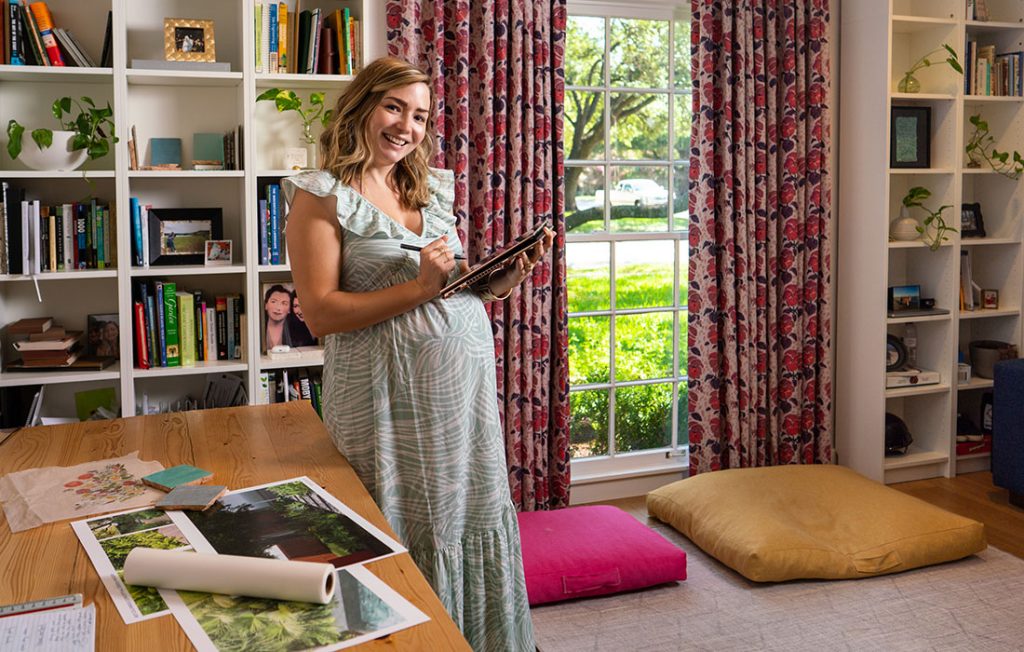
Portraits by Weston Carls
Lead photo by Benjamin Tijerina
Whether for traditional architecture, landscape architecture, interior design or homebuilding, both trends and personal preferences can play an important role in making your space your own. In recent years, design platforms like Houzz report an estimated 58% increase in home remodeling project leads, and Central Texas is no exception. Little details like limestone, a strategic plant or elements to protect your home from excessive heat are just some things local designers say can go a long way for practicality and a look that matches your own style.
Jump to:
Studio Penhaskashi | Raise Design | CG&S Design-Build | Urban Home Builders
Joshua Penhaskashi
Studio Penhaskashi
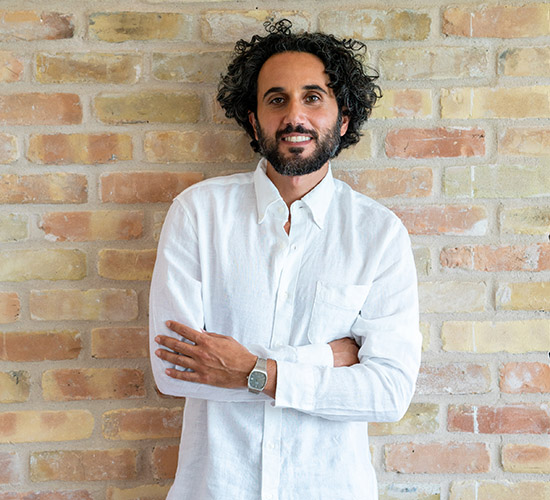 Focusing on interconnected flow of spaces, textures and materials, Joshua Penhaskashi is known for approaching his work like a painter who makes sure each unique architectural element stands out and works together with the entire structure. Most passionate about soft and ephemeral qualities of light, Penhaskashi’s technique brings radiance and unique qualities into his clients’ homes.
Focusing on interconnected flow of spaces, textures and materials, Joshua Penhaskashi is known for approaching his work like a painter who makes sure each unique architectural element stands out and works together with the entire structure. Most passionate about soft and ephemeral qualities of light, Penhaskashi’s technique brings radiance and unique qualities into his clients’ homes.
Are there any new trends you are noticing?
“I believe the design influence of the midcentury modern style is still permeating through all aspects of design and culture, and I have been amazed at its lasting effects. It’s all-encompassing, from the Bronco craze to the nostalgia over the simple ingenuity of midcentury furniture. The blank modern box left people wanting, and that void directed us to look back at the 1960s and 70s, which focused on a connection of indoor and outdoor living, open floor plans, large windows and the highlighted use of natural building materials. I see this re-imagining of midcentury design as a hugely influential trend in architecture today.”
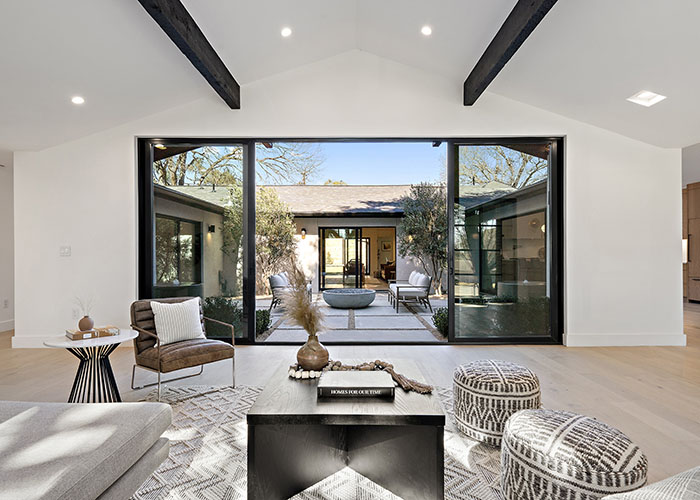
What is something common in Central Texas that’s not seen as much elsewhere?
“Austin and many Texas cities have a great stock of houses and buildings from the 1960s and 70s that are begging to be revamped. These properties grant designers, like myself, an amazing opportunity to update them to the current needs of the day. ‘The Courtyard House’ was made possible by keeping the bones of a beautiful brick midcentury gem and breathing modern life into it — all without losing any of its charm or character. The spirit of the original design is still firmly intact.”
Has the recent pandemic affected architecture trends?
“One of the benefits of the pandemic is that it allowed people to go inwards and create. It brought everyone — including designers — into their homes and forced people to feel their personal surroundings as their primary world. Never before have people been so focused on home. They never really had to be. As a result, I’ve noticed that people have developed an intense level of attention to detail and functionality — a level resembling that which designers and architects like myself have already in their day-to- day lives.”
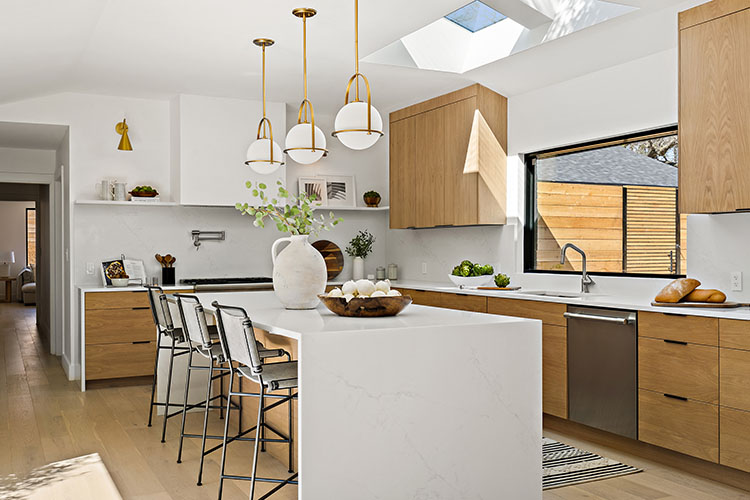
What is your favorite aspect of the architecture design process?
“I love the process of creating a floor plan, and all the small adjustments that come together to make for an excellent space. I’ve always been fascinated by how powerful dimensions can be in affecting our senses including the invisible power of the height, width and depth in any space, and combining that with the characteristics of different materials to bring a space to life.”
What is the most important thing when meeting with a new client?
“TRUST. This can make or break a project, and the presence of trust is absolutely imperative to achieve the desired outcome. It is a huge gift in the design process when someone trusts your vision and says, ‘go for it.’ That flow between client and architect is essential.”
From a consumer perspective, what should people pay most attention to when working with an architect?
“Clients should pay most attention to the architect’s ability to listen. There are so many details that are significant to a client and important to be incorporated into a project. An architect that listens will be able to bring these details to fruition with ease. Simply being a talented designer is not enough when it comes to having a highly functional space.”
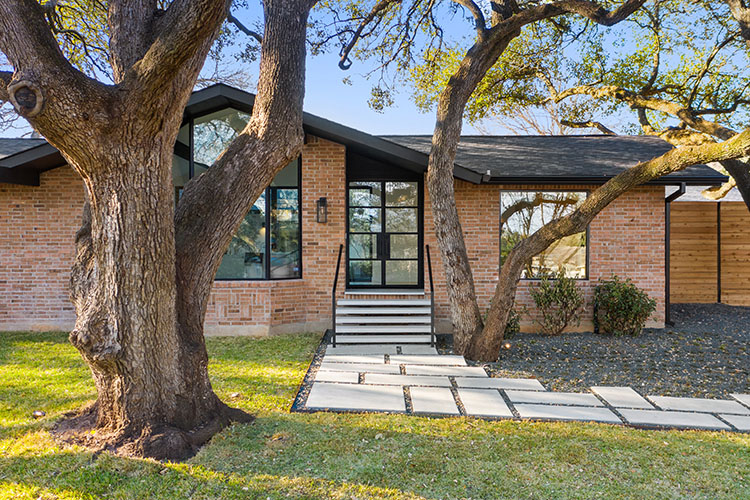
Where do you draw your own inspiration from?
“My background in art history has been the single most abundant source of inspiration. Artists such as Hélio Oiticica helped me to learn to see spaces differently through their works. I started to understand the emotional and psychological power of creating unique spaces. When I am stuck in the design process of a particular project, art that is purely visual and thought provoking becomes a plentiful fountain for finding direction in the unknown.”
Would you say rising home prices are affecting architecture for homebuyers and companies?
“Yes, rising prices have created a demand for faster production. When quickly produced new buildings and houses pop up all around the city, it provides for immediate housing needs, but unfortunately leaves us all with poorly designed structures for years to come. This is why, in my personal work, I am dedicated to making sure the design process is not cut short. I have been lucky that I continuously attract projects and people that understand and value the process and timing of great design.”
Rachel Raise
Raise Design
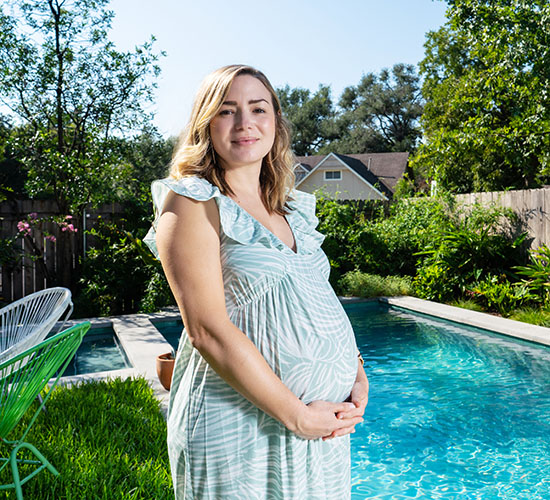
Working on projects of all scale — both in private and public sectors — Rachel Raise takes pride in turning outdoor spaces into pieces of art, while also teaching clients about the benefits of native plants and certain pollinators. Her efforts aim to make landscape architecture “more approachable” — while always taking an educational approach within her landscape design suggestions.
It’s so hot in Central Texas this year! What can people do to keep their landscaping alive?
“The main thing is to plant native plants; they are used to our drought conditions and can also handle when we do get heavy rain out of the blue. Other tips are to use drip irrigation systems, which use less water than sprinklers but are targeted on each individual plant and root zone. Also, have a rainwater harvesting system. Plants prefer rainwater and with the torrential downpours we tend to get, it is a great way to save water and help your landscape thrive. Plus, the city has a rebate program for them so it’s a win-win!”
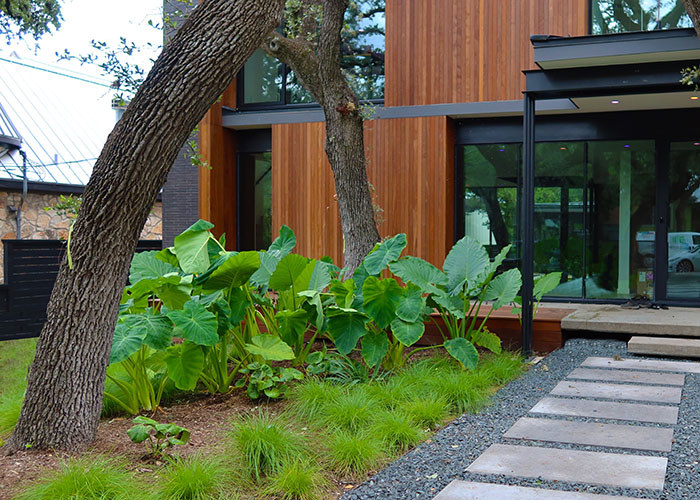
What sparked your passion for landscaping?
“How holistic the design approach is. That’s what drew me in. We look at everything from soil type, solar orientation, site context, geology, geography and topography, but it is also a very creative field and there really is no limit to what you can create when you are using plants as the medium.”
What is the most popular plant that people typically navigate toward?
“In Austin, I found people are really drawn to architectural plants like agaves and sotols, which have very firm structures, as well as plants that soften hard lines, such as Bamboo Muhly grass or Palo Verde trees.”
What types of plants and flowers are best for Austin due to its challenging climate?
“Despite our harsh summers, there are tons of native and adapted plant options that bloom throughout the year! Of course, there are the hardy cacti and agaves, but they do require a good amount of sun. There are so many great perennials that bloom in the summer — Mexican Bush Sage, Datura and Copper Canyon Daisy — and beautiful native grasses that add texture and lushness in the fall, like Gulf Muhly and Side Oats Grama. Attracting pollinators in your gardens will also help to extend your bloom times. Go bees!”
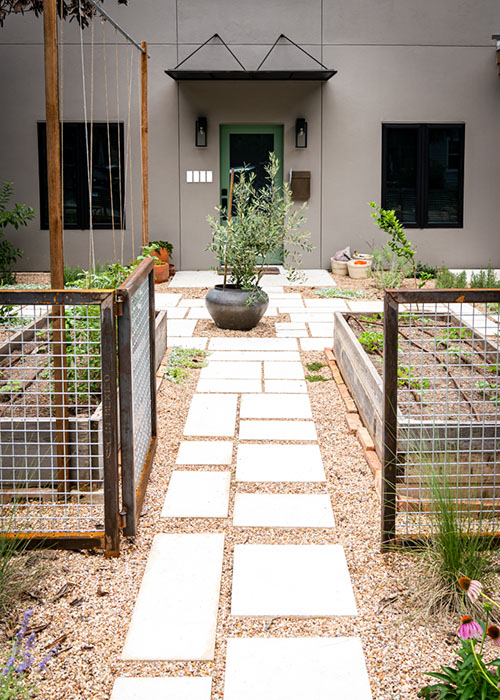
What are some favorite new trends you are seeing?
“Lately, I’ve been seeing and designing a lot more patios in the front yard, and I am all about it! I love the sense of community it helps to foster, and they tend to have a much more playful vibe than backyard patios. I am also hoping as the summers continue to get longer and hotter we see more front yards that utilize native plants and materials versus just sod.”
What would you suggest to someone who’s hoping to have a nice landscape, but in a minimized way?
“You can’t go wrong with really honing in on a simple plant palette but planting in mass. I suggest thinking in terms of height and bloom time, so you have something in bloom the majority of the year and then from there choose at least three different plant species and have at minimum three of each plant for masses. Planting in odd numbers is a good rule, as well, and remembering that plants will grow! A lot of times it can look underwhelming at first but with a good irrigation system and the right amount of light, everything will take off in no time!”
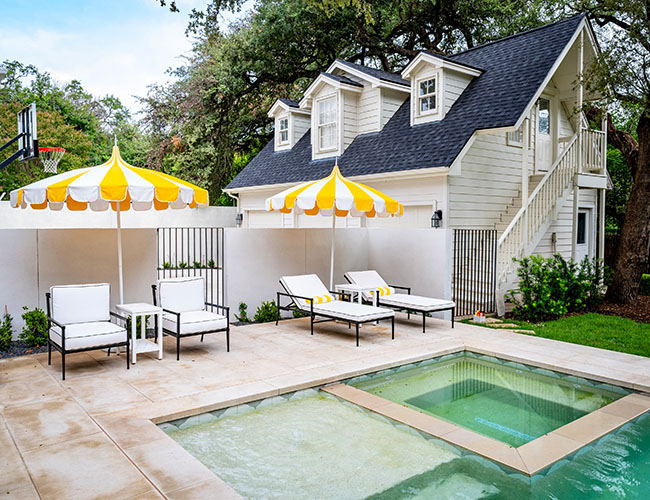
What is one of your favorite landscaping projects you’ve worked on?
“That’s a tough one. I really have hit the jackpot with neat clients who want to push the boundaries of the typical landscape design. I do love when clients want to integrate edible or medicinal plants into the landscape, versus having separate raised beds for them. I think it adds a sense of wonder and exploration and connects us back to the land. I also love when clients say they want to plant for pollinators!”
We’ve heard that you give back to the community. Can you tell us more about that?
“I am the co-founder of an organization called Pollinate Austin, which led the initiative to get Austin certified as a Bee City. We do a lot of work around education of and advocacy for pollinators and have installed pollinator gardens throughout Austin and the surrounding areas. It all began with me emailing the city in 2018 saying I wanted to get Austin more involved with saving the bees and has turned into a fully funded and supported endeavor. It has been really inspiring to see what can happen with just a cold call! Raise Design also gives back a portion of every project to a non-profit organization each year. This year the organization is TreeFolks, which fosters community through the planting and maintenance of trees in Central Texas.”
Madison Mullins
CG&S INTERIOR DESIGNER, NCIDQ, ASID
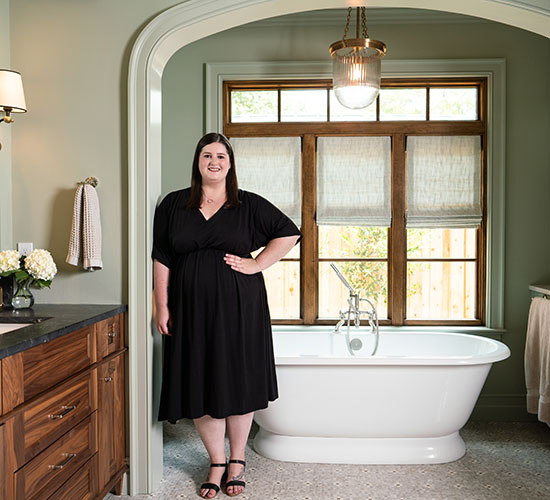 From drafting construction documents for floor plans, demolition plans, reflecting ceiling plans, power plans and interior elevations, to determining details for residential renovations, CG&S Design-Build takes interior design and construction to in-depth and thorough levels. A firm that is all about making your living space work for you, Madison Mullins helps clients highlight and execute individual visions for unique, trendy and functional home spaces — through both elements built onto homes and removable design.
From drafting construction documents for floor plans, demolition plans, reflecting ceiling plans, power plans and interior elevations, to determining details for residential renovations, CG&S Design-Build takes interior design and construction to in-depth and thorough levels. A firm that is all about making your living space work for you, Madison Mullins helps clients highlight and execute individual visions for unique, trendy and functional home spaces — through both elements built onto homes and removable design.
What are some current trends within interior design and how do they pertain to the architecture of a home or building?
“Wallpaper is back and here to stay, which makes me so happy! Incorporating wallpaper into a space can be subtle and accentuate the architecture or it can add interest to a blank space where architectural features are lacking.”
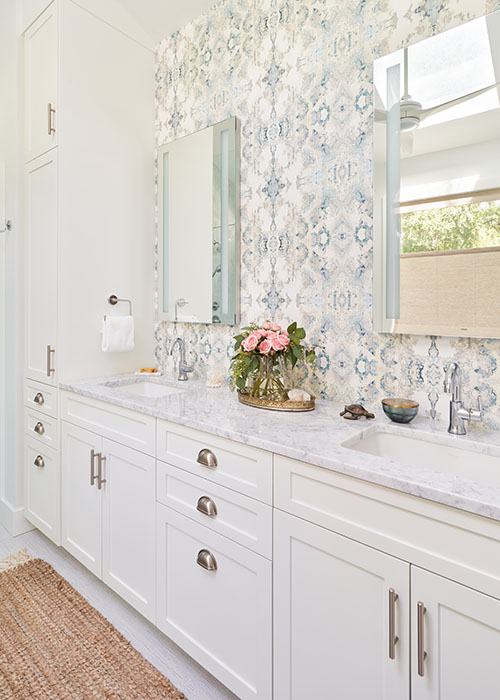
What is your favorite element of interior design?
“I love mixing colors and patterns in wallpaper, fabric and paint to customize the design of a space to the individual style of my client. There are so many possibilities, and honing in on what makes sense for them and makes them happy is what I take pride in. Their space should look like them, not me!”
What are some tips and tricks for those who want to do some renovation, but they are on a budget?
“Incorporate vintage! You can often find beautiful, high quality vintage fixtures, furniture and décor priced similarly or less than new pieces. You’ll get more bang for your buck in the long run by purchasing a well-made, solid wood piece that will last forever instead of a brand-new piece made of MDF or plywood with a wood veneer that will fall apart and need replacing in a few years. Another tip is using remnants of natural stone slabs for smaller countertops, like a bathroom vanity. If you only need a few linear feet of stone, don’t buy a whole new slab. Many slab yards and fabricators sell remnants from past projects at a deep discount.”
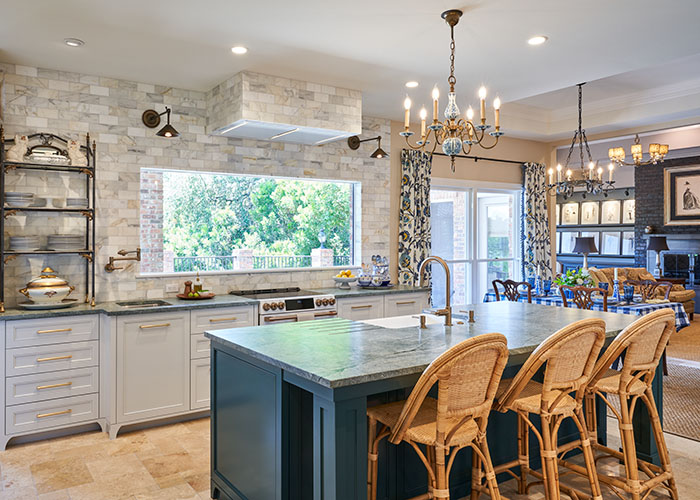
What would you recommend to anyone looking to hire an interior designer?
“Look for someone who understands your style, listens to your wants and needs, communicates well and will respect your budget. Browse portfolios of interior designers you are interested in and meet with more than one before deciding who to work with. The designer/client relationship is such an important one, and it needs to be the right fit for both parties.”
What is your favorite project you’ve worked on?
“My favorite project is a new build that just wrapped up in construction a few blocks from my own home. This house was a nearly three-year labor of love, and a lot of my heart is in the design of the interior. It is a mix of traditional, mid-century and Prairie styles with a layered interior showcasing different colors and patterns in a way that feels fresh but also timeless, and not at all like new construction. I touched every surface in that house — from the cabinetry and tile, to the window treatments and furniture. It challenged me as a designer and made me learn more about my own style. I’m so proud of it!”
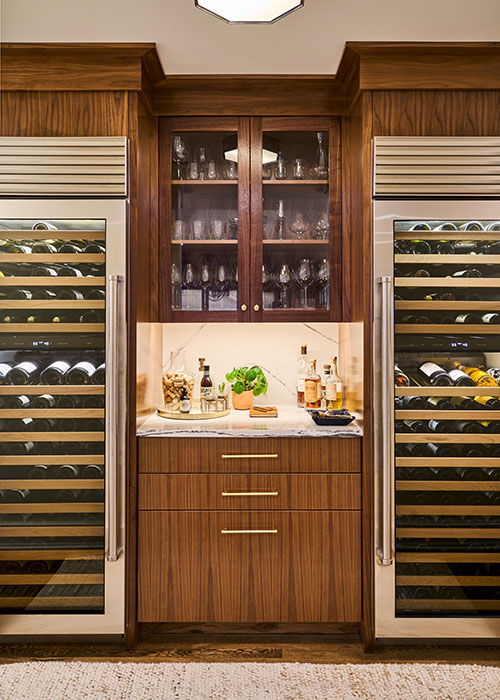
What are some classic and timeless trends you often see?
“Some things that I think will never go out of style are white kitchens, marble countertops, subway tile and unlacquered brass that gets better with age.”
Are there any unique interior design trends related to Central Texas that you might not see elsewhere?
“I think we tend to embrace bold color and pattern more than other regions. For example, on the east coast you see a lot of white and muted blues, whereas in Central Texas you’ll see pops of saturated yellow or pink. This could be a product of the vibrant colors in the murals all around Austin!”
What are some of the upcoming trends you expect to see two to three years from now?
“In the next few years, we can expect to see warmer tones rather than greys, more private spaces rather than open concept floor plans, and an increased use of natural materials for tile, countertops, fabric, wall coverings and furniture.”
Gary Zygmont
Urban Home Builders
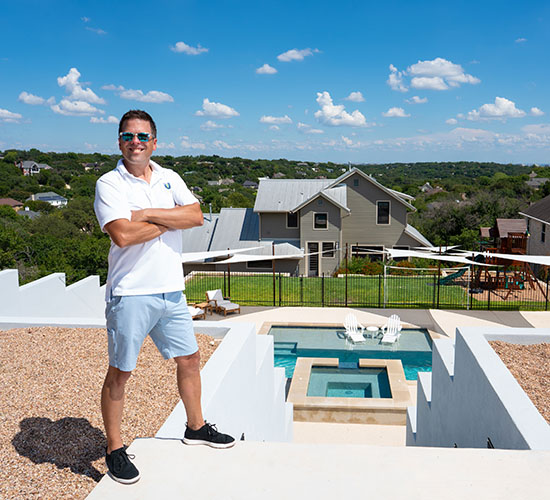 Passionate about custom built homes, Gary Zygmont takes perfectionism in the client experience to a new level by only committing to one to two home builds per year, allowing him to focus on a more personalized experience for each client. As a result, Zygmont is proud to hold a consistent record of all his projects being both on time and on budget.
Passionate about custom built homes, Gary Zygmont takes perfectionism in the client experience to a new level by only committing to one to two home builds per year, allowing him to focus on a more personalized experience for each client. As a result, Zygmont is proud to hold a consistent record of all his projects being both on time and on budget.
As a homebuilder, what are some of your favorite current trends?
“My current client has complained of cold feet her entire life, even in Texas. She is so excited for her radiant flooring we are installing. With more people working from home now, we are really dialing in on home offices with attached bathrooms and kitchenettes. Outdoor living has really taken off too. It’s not necessarily a new thing, but almost every home is now wanting it, and it is getting more and more detailed and amazing. We are doing outdoor areas that have covered screened in porches with fans and covered patios with built-in misters.

Along with that, there are outdoor kitchens that have grills, flattops, kegerators, ice makers, a fridge for beers and one for wine, plus televisions. We even have put in broilers and microwaves and hard-piped natural gas not only for the grill but also for the built-in heaters for fall and winter. Added to all that is a pool and hot tub, and families are reporting back that the kids are playing outside in the sun all day, and no one is talking about video games.”
What about some timeless elements that don’t seem to go out of style?
“Central Texas will always be home to stucco, limestone, outdoor living, low water use landscaping, hardwood flooring, painted cabinets, open concepts, decks and patios.”
What are some current challenges in the home building process this year for people near Austin?
“Labor and material shortages and costs, delays due to supply chain issues, and how long it takes for inspections by engineers and municipalities.”
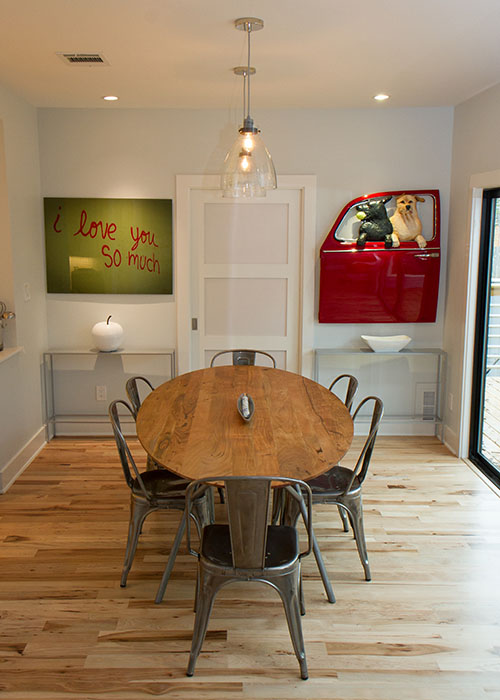
What are the benefits of an accessory dwelling unit (ADU) to a home?
“ADUs can have all kinds of benefits. They can be the answer to whatever your home is missing or needing the most. Some of those can be additional income or being able to expand your square footage when trees would prevent a second story addition. Others are a home office and gym, or a place for guests. ADUs can serve as the backdrop for incredible outdoor living with a pool next to it and a bathroom and outdoor kitchen.”
Where do you draw your personal inspiration from regarding the architecture of a home?
“I like all styles of architecture, and I really love when a client gets giddy with excitement over their new home. Some of my current favorite styles of architecture are modern Balinese, soft modern French and any style that has varying interior textures whether that is wood, stucco, stone, plaster, etc.”
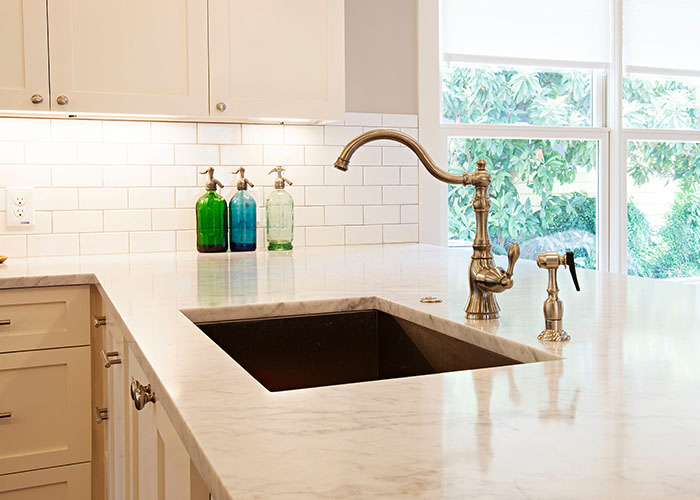
What is the most important feature of a home’s architecture?
“I realize this is going to change dramatically from person to person. I totally get how for someone it could be the master tub, the home theater room or the garage. For my family, life revolves around food and drink, so my answer is the open concept kitchen. One where the music is going, all small groups of people can see and hear each other, but yet, there is separation. Since I love cooking, I get to watch it all from my wheelhouse.”
What are some common things that people need to know about maintaining a home in Austin?
“Our hot Texas sun really damages wood. Wood that is on a house needs to be watched and resealed based on sun exposure. Wood that is on the north side of the house won’t need to get repainted or re-stained as often as wood on the south side of the house. Wood decking can take a real beating by the sun. Cedar decks used to be popular, but they just don’t hold up as well as pressure-treated or synthetic decks. The biggest issue with wood fencing is sprinkler heads. Make sure they are not wetting your fencing every morning at 5 a.m.”
MORE: Your Dream Dinner Party Awaits with Help from These Austin Entertaining Essentials
